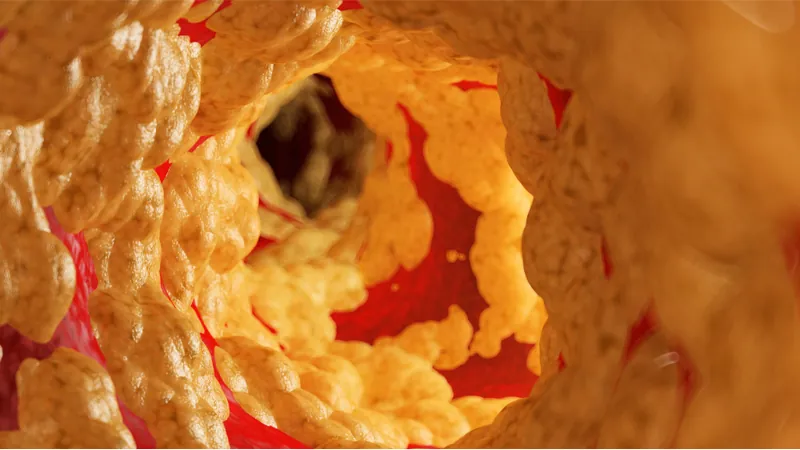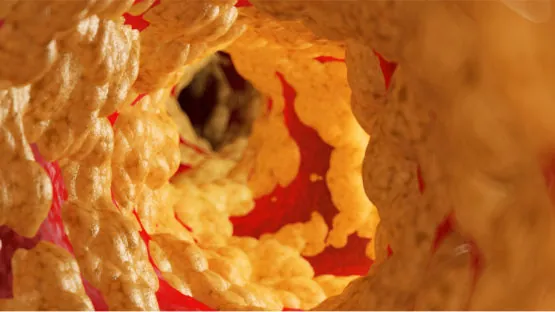Cyclodextrins have been of particular interest in the context of treating atherosclerosis, so today we want to highlight some interesting research that uses a novel delivery method to combat this disease.
Nanoparticles improve drug delivery
Cyclodextrins describe a group of cyclic oligosaccharides, which have a varied range of uses in the food, pharmaceutical, drug delivery, agricultural, and chemical industries due to their ability to solubilize and stabilize guest compounds.
In recent years, there has been an increasing interest in the use of nanoparticles in the context of drug delivery. In March 2020, researchers published a study showing how they encapsulated cyclodextrin molecules in order to deliver them to atherosclerotic lesions [1].
The researchers showed that polymeric cyclodextrin with a diameter of approximately 10 nanometers accumulates around 14 times more within atherosclerotic plaque than conventional cyclodextrin does. This is good news as it makes it possible to reduce plaque sizes using lower doses of cyclodextrin, making it more cost-effective and more efficient.
Building on this initial research, the results of a follow-up study have been published in the journal ACS Nano. Those researchers had used both cyclodextrin and statin molecules encapsulated in nanoparticles to deliver both to atherosclerotic lesions [2]. The researchers refined their process during this study to create nanoparticles with a diameter of 100 nanometers, making it even more efficient.
Upon arrival, the payload is released into the lesion, and the cyclodextrin binds the cholesterol molecules present in the lesion to it. This binding of the cholesterol appears to aid the macrophages present at the lesion site, presumably due to it binding at least some of the oxidized cholesterols.
Oxidized cholesterols and their byproducts, such as 7-ketocholesterol, are a real problem for macrophages to break down, and macrophages cannot metabolize 7-ketocholesterol at all. The macrophages keep on absorbing it until they grow into giant bloated and dying foam cells, which then contribute to the mass of atherosclerotic plaque.
The combination of cyclodextrin and statin appears to cause the reduction of cholesterol levels in established plaque in mice. Statins also seem to inhibit the formation of foam cells, which, again, suggests that the indigestible oxidized cholesterols and byproducts are being somewhat reduced in abundance. These results strongly suggest that the synergy of cyclodextrin and statin can address the inflammation and cholesterol-laden environment present within plaques.
Atherosclerotic plaques exhibit high deposition of cholesterol and macrophages. These are not only the main components of the plaques but also key inflammation-triggering sources. However, no existing therapeutics can achieve effective removal of both components within the plaques. Here, we report cargo-switching nanoparticles (CSNP) that are physicochemically designed to bind to cholesterol and release anti-inflammatory drug in the plaque microenvironment. CSNP have a core–shell structure with a core composed of an inclusion complex of methyl-β-cyclodextrin (cyclodextrin) and simvastatin (statin), and a shell of phospholipids. Upon interaction with cholesterol, which has higher affinity to cyclodextrin than statin, CSNP release statin and scavenge cholesterol instead through cargo-switching. CSNP exhibit cholesterol-sensitive multifaceted antiatherogenic functions attributed to statin release and cholesterol depletion in vitro. In mouse models of atherosclerosis, systemically injected CSNP target atherosclerotic plaques and reduce plaque content of cholesterol and macrophages, which synergistically leads to effective prevention of atherogenesis and regression of established plaques. These findings suggest that CSNP provide a therapeutic platform for interfacing with cholesterol-associated inflammatory diseases such as atherosclerosis.
Conclusion
The development of another way to address atherosclerosis is welcome given the lack of current solutions. These animal results also give hope that biotech company Underdog Pharmaceuticals‘ approaches to bust oxidized cholesterol using a modified form of cyclodextrin may also work.
Literature
[1] Kim, H., Han, J., & Park, J. H. (2020). Cyclodextrin polymer improves atherosclerosis therapy and reduces ototoxicity. Journal of Controlled Release, 319, 77-86.
[2] Kim, H., Kumar, S., Kang, D. W., Jo, H., & Park, J. H. (2020). Affinity-Driven Design of Cargo-Switching Nanoparticles to Leverage a Cholesterol-Rich Microenvironment for Atherosclerosis Therapy. ACS Nano.




